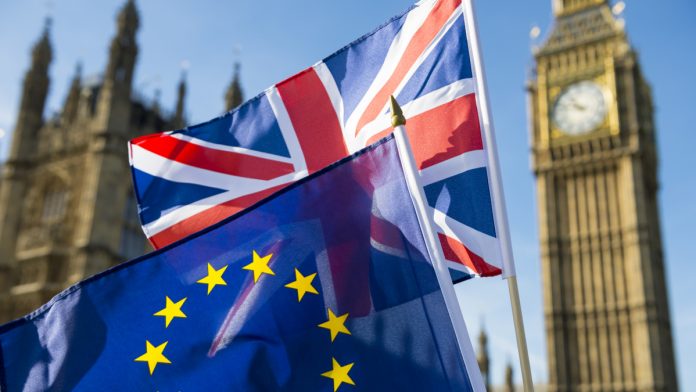A fresh blow to UK Prime Minister Theresa May’s Brexit plan sent the pound lower on Monday. The pound—US dollar exchange rate dipped to a low of US$1.3185, before recovering and hitting a high of US$1.3281 in early trade this morning.
| What do these figures mean? |
|---|
| When measuring the value of a pair of currencies, one set equals 1 unit and the other shows the current equivalent. As the market moves, the amount will vary from minute to minute.For example, it could be written:1 GBP = 1.28934 USDHere, £1 is equivalent to approximately $1.29. This specifically measures the pound’s worth against the dollar. If the US dollar amount increases in this pairing, it’s positive for the pound. Or, if you were looking at it the other way around:1 USD = 0.77786 GBPIn this example, $1 is equivalent to approximately £0.78. This measures the US dollar’s worth versus the British pound. If the sterling number gets larger, it’s good news for the dollar. |
The pound experienced losses at the start of the week as doubt was thrown over the next steps for Brexit. Theresa May’s plan to bring her Brexit deal back to Parliament for a third vote was thrown into doubt by the speaker of the House of Commons. Owing to a procedural rule dating from 1604, the same motion cannot be brought before MP’s for another vote without substantial changes. There have been no changes to the Brexit deal since it was put to Parliament for a meaningful vote last Tuesday.
The default remains that the UK will leave the EU without a deal in 10 days time. Theresa May must request an extension to Article 50 from Brussels. Uncertainty over the next steps weighed on the pound. However, a lengthy extension could result in Brexit never happening, which is offering support this morning.
| Why is a “soft” Brexit better for sterling than a “hard” Brexit? |
|---|
| A soft Brexit implies anything less than UK’s complete withdrawal from the EU. For example, it could mean the UK retains some form of membership to the European Union single market in exchange for some free movement of people, i.e. immigration. This is considered more positive than a “hard” Brexit, which is a full severance from the EU. The reason “soft” is considered more pound-friendly is because the economic impact would be lower. If there is less negative impact on the economy, foreign investors will continue to invest in the UK. As investment requires local currency, this increased demand for the pound then boosts its value. |
Today, in addition to Brexit, investors will be watching UK wage data. Despite Brexit uncertainty, UK wage growth has been strong. Strong wage growth points to higher future inflation. Analysts are forecasting the UK wages held steady and increased 3.4% in the three months to January. Unemployment is expected to remain steady at multi decade lows of 4%. Strong labour data could offer some support to the pound amid Brexit chaos.
Dollar Dips As Fed Moves Into Focus
The dollar moved broadly lower on Monday, although higher than the pound. The dollar was out of favour as investors looked ahead to the Federal Reserve rate decision on Wednesday. Market participants are expecting the Fed to cut the number of interest rate hikes planned for this year. The Fed performed a dramatic U-turn in January, changing from a more aggressive stance to a cautious stance on the US and global economy.
| Why do raised interest rates boost a currency’s value? |
|---|
| Interest rates are key to understanding exchange rate movements. Those who have large sums of money to invest want the highest return on their investments. Higher interest rate environments tend to offer higher yields. So, if the interest rate or at least the interest rate expectation of a country is relatively higher compared to another, then it attracts more foreign capital investment. Large corporations and investors need local currency to invest. More local currency used then boosts the demand of that currency, pushing the value higher. |
Prior to the Fed monetary policy announcement on Wednesday, investors will look towards US factory orders and durable goods data for further insight into the US economy. Analysts are forecasting that the data will show a slight recovery in the sector after a difficult few months.
This publication is provided for general information purposes only and is not intended to cover every aspect of the topics with which it deals. It is not intended to amount to advice on which you should rely. You must obtain professional or specialist advice before taking, or refraining from, any action on the basis of the content in this publication. The information in this publication does not constitute legal, tax or other professional advice from TransferWise Inc., Currency Live or its affiliates. Prior results do not guarantee a similar outcome. We make no representations, warranties or guarantees, whether express or implied, that the content in the publication is accurate, complete or up to date. Consult our risk warning page for more details.
This article was initially published on TransferWise.com from the same author. The content at Currency Live is the sole opinion of the authors and in no way reflects the views of TransferWise Inc.





